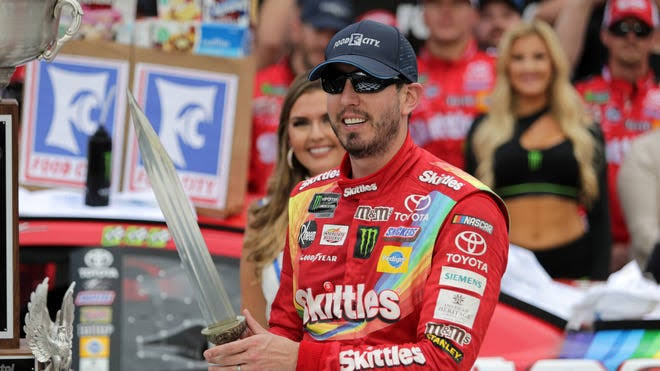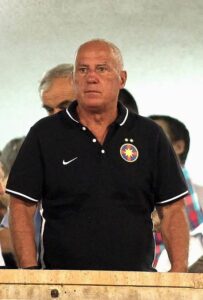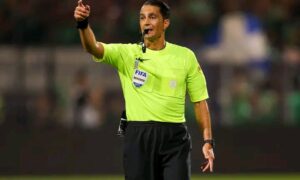
Certainly! Here’s a detailed account of Kyle Busch’s contact incident, expanded to approximately 700 words:
—
**Kyle Busch’s Contact Incident: An In-Depth Overview**
Kyle Busch, one of the most accomplished and talented drivers in NASCAR, has a reputation for aggressive racing and fierce competition on the track. Over the years, his driving style has sometimes led to controversial moments, including contact with other drivers that have sparked debates among fans, analysts, and fellow competitors. One notable incident involving Kyle Busch was his contact with another driver during a race, which garnered significant attention and analysis.
**The Context of the Incident**
The incident took place during a high-stakes NASCAR Cup Series race, where tensions were high due to playoff implications and intense competition among the top drivers. Kyle Busch, known for his aggressive style, was involved in a battle for position with a rival driver. As the laps progressed, the competition intensified, leading to close-quarters racing, especially on the narrow and challenging oval tracks that NASCAR is famous for.
**Details of the Contact**
On a crucial lap, with the race nearing its conclusion, Kyle Busch was attempting to overtake his competitor for the lead. As they approached Turn 3, Busch made a move to the inside line, trying to outbrake his opponent and gain a position. However, the maneuver resulted in contact: Busch’s left front quarter panel made contact with the right rear of the other driver’s car. The impact caused a slight side swipe, which pushed the trailing car slightly off its line and disrupted its momentum.
This contact was not intentional in the sense of an aggressive shove, but rather a racing incident stemming from aggressive driving and close racing conditions. Nonetheless, the contact was significant enough to alter the outcome of the race, with the trailing driver losing valuable track position and momentum. The incident drew immediate attention from commentators and fans watching the race live.
**Immediate Aftermath**
Following the contact, the race officials reviewed the incident. NASCAR’s rules allow for penalties if the contact is deemed to be intentional or reckless, but in this case, it was determined to be a racing incident rather than a deliberate act. Kyle Busch was not penalized, but the moment sparked immediate reactions from other drivers and media.
Some fellow competitors criticized Busch for his aggressive tactics, arguing that such contact could lead to accidents or injuries. Others defended his racing style, emphasizing that NASCAR is a contact sport and that aggressive moves are part of the competition. Busch himself expressed frustration over the situation, acknowledging that racing incidents happen but emphasizing his desire to race hard and fair.
**Public and Fan Reaction**
Fans’ reactions to the incident were mixed. Many appreciated Busch’s aggressive approach, viewing it as part of his competitive edge. Others believed that such contact was unnecessary and could be dangerous. Social media lit up with debates about whether Busch’s move was justified or reckless.
Sports analysts discussed the incident extensively, analyzing the race footage and discussing the risks and rewards of aggressive racing. Some suggested that Busch’s actions were within the bounds of competitive racing, while others called for more caution to prevent accidents.
**Long-Term Implications**
While this specific incident did not lead to penalties or injuries, it highlighted the ongoing challenge in NASCAR racing: balancing aggressive competition with safety. Kyle Busch continued to race aggressively in subsequent seasons, often drawing both praise and criticism.
The incident also served as a reminder of the intense rivalry and high-pressure environment of NASCAR racing, where every move on the track can have significant consequences. It exemplified the fine line drivers walk between assertiveness and recklessness, and how their decisions can influence their reputation and relationships with other drivers.
**Conclusion**
In summary, Kyle Busch’s contact with another driver during that race was a typical example of the aggressive, high-stakes nature of NASCAR. While it was classified as a racing incident rather than intentional contact, it underscored the competitive spirit that drives NASCAR drivers to push their cars and themselves to the limit. Such moments are part of the spectacle that makes NASCAR thrilling for fans, but they also serve as reminders of the importance of safety and sportsmanship in motorsport. Kyle Busch’s career continues to be marked by his fierce competitiveness and willingness to race hard, making incidents like this a part of his legacy on the track.
—
Would you like more details on a specific incident or additional context?





